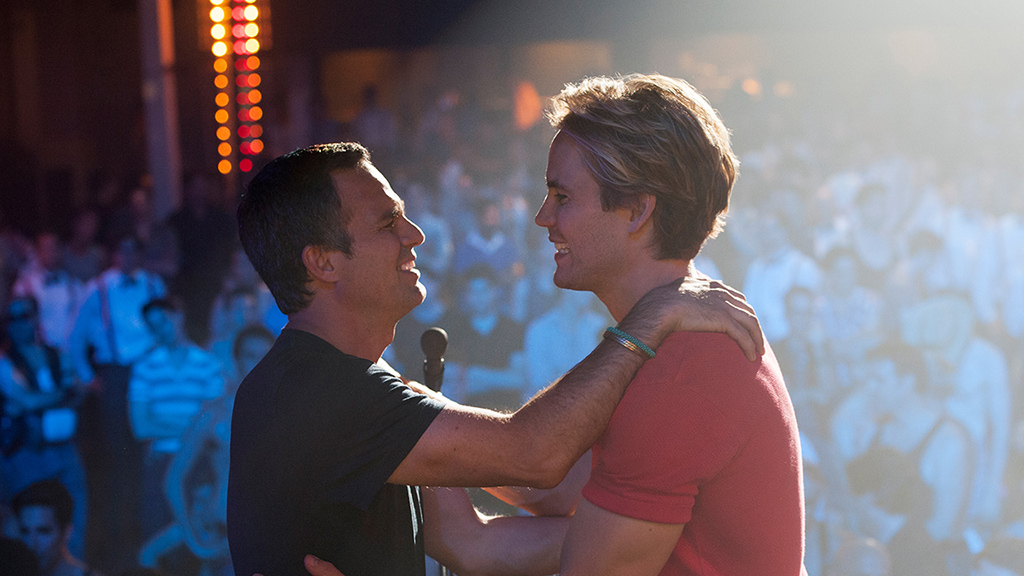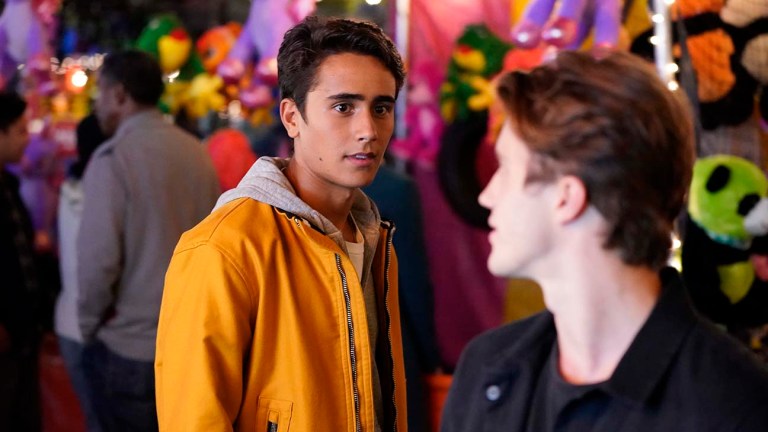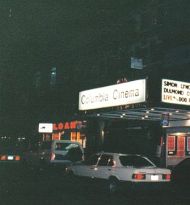Questions HBO’s “The Normal Heart” Raises about Contemporary Queer Activism
Things are looking good for the queer community, if you’re standing in the right place.

Nearly thirty years after the 1985 off-Broadway debut of Larry Kramer’s acclaimed The Normal Heart, HBO premiered a TV-movie adaptation on May 24th to nearly 1 million viewers. Ryan Murphy helmed the project, which details the early days of the AIDS epidemic in New York City, when infected young men convulsed in the arms of lovers, their spent bodies then stuffed into trash bags in hospital alleyways – all to the deafening silence of the political powers that be.
When President Obama phoned Ryan Murphy a few days ago to compliment the emotional impact of the film, Murphy called it a “full-circle moment”: the movie, and the play upon which it is based, centers on Larry Kramer’s fictionalized persona, Ned Weeks, screaming for Washington’s attention. Now, after his having earned it (more or less), is the time to question the modern-day impacts of Kramer’s legacy – from streets, to stage, to screen, and back again.
The Normal Heart sets itself apart from other mainstream depictions of HIV/AIDS justice-fighting by simply and revolutionarily being a story by gay people about gay people. Unlike Oscar darlings Dallas Buyers Club (2013) and Philadelphia (1993), in which heterosexual men finally recognizing homosexual humanity is construed as heroism rather than baseline moral decency, Kramer and Murphy depict the straight community of the early eighties as an abominably oppressive, willfully blind mass majority. (In other words, honestly.) You will find no straight saviors here.
But who, then, are the heroes?
This is where it gets messy.
What I like about the film is its messiness — of aesthetic and of spirit. (We’ll get to what I don’t like later.) Aesthetic: an oft-jostled camera carries us through the grim underworld of AIDS activism, which spans from the tired gray tedium of cramped office space to the quarantined rooms, in vitriolic yellow-whites, of the dead and the dying. Spirit: Ned Weeks is our protagonist, but not necessarily our hero.
Mark Ruffalo successfully tones down his usual loveable charm as the writer Ned Weeks, who is a loner, a ferocious polemicist, and as admirable for his force of will as he is despicable for his pitiless aggression. When Julia Roberts’ Dr. Brookner enlists him to help spread the word about a new disease plaguing the gay community, Weeks has no problem telling other men to stop sleeping around, having long since blamed the gay culture of sexual liberation for his own loneliness. He and several friends establish the Gay Men’s Health Crisis, a fundraising and counseling community organization; despite being a founder, Weeks is never granted a legitimate leadership position, the other members wary of his public and private abrasiveness. At the film’s end, he’s ousted. By then, he has accused the government of murdering its own people on national television. He has accused grief-stricken gay men of killing their lovers.
The Normal Heart succeeds in the complex questions it asks of us. Instead of business as usual for these sorts of narratives – Will the homophobic dirtbag finally see the error of his homophobic ways, become slightly less of a dirtbag, and save all the queers? – this story is examining one of the central tenants of activism, and some of the ideological divides which continue to fracture our communities today. Jim Parsons as Tommy Boatwright, shining in a way The Big Bang Theory has never let him, tries to calm an enraged-as-usual Weeks when they are both still bound by the GMHC, as well as a fragile friendship: “You catch more flies with honey, baby.”
Whether or not this boring old adage is true, and whether or not it even deserves to be asked, is one of the major dramatic questions of the contemporary LGBTQ movement.
When do we want straight people to stand with us or for us, and how, and why — if ever? Is it strategic to be ‘nice’ to oppressors, or is it cowardly and assimilationist (and possibly ineffectual to boot?)
Of course, a question that also begs asking is whether or not a collective ‘we’ is even an appropriate pronoun when it comes to the LGBTQ community — a question The Normal Heart inspires not through its content, but through its rather appalling omissions.
Marcie Bianco for Indiewire has extensively detailed the film’s erasure of women, who in reality “account for 20% of HIV diagnoses, with a majority of that percentage being straight women and/or women of color […] It is an egregious error to believe that HIV has only ever been a gay man’s disease.” Neither has it only been a white man’s disease, though you wouldn’t know from watching Murphy’s film – there are two men of color with miniscule, throwaway speaking roles, even though African Americans were, and still are, infected and killed by AIDS at the most dramatic rates. Where, in Larry Kramer’s New York City, are the transgender and gender-non-conforming activists who just a decade previously had led the charge at Stonewall?
There is but one lone lesbian in the film, who shows up to help at the GMHC after the death of a gay male friend. She had been hesitant to help beforehand: “What have you guys ever done for us?” Bianco argues that this line depicts lesbians as both reactionary and “inherently heartless misandrists” but I had a different read. This character seemingly goes from being institutionally motivated – steering clear of gay men’s issues because gay men as a collective have a history of not treating lesbians awesomely – to being personally motivated. Her friend died. Simple and awful as that. Death is the great equalizer.
It is now thirty years later, and we no longer have something as publicly, pressingly catastrophic as the AIDS crisis to unite us in cause, if not uniformly in method. But that does not mean catastrophes are now exclusively the stuff of history just because cis white men are sitting pretty.
At the end of The Normal Heart, Weeks has finally found love in the rather one-dimensional Felix Turner, an AIDS victim played valiantly by gay-in-real-life Matt Bomer; the two are married on Turner’s death bed. For all the radicalism of Weeks’ loud and uncompromising voice, his message the whole film through remains resoundingly conservative: promiscuity in the name of sexual liberation brewed an epidemic, when pure, monogamous love was what the gay community should have been fighting for all along. After Turner dies of the disease, Weeks returns to his alma mater, Yale, for Gay Week, and watches as safely coupled queer coeds dance freely and happily in a way, a generation previously, Weeks himself never could.
We are now in the midst of LGBT Pride Month, a year after the Supreme Court struck down section three of the so-called Defense of Marriage Act, which had held a sixteen-year stranglehold on queer civic freedoms. AIDS continues to devastate, with over 25 million deaths worldwide since its discovery in 1981 — but from the confines of Western, white, socioeconomically privileged bubbles, that devastation feels curbed, manageable.
Things are looking good for the queer community, if you’re standing in the right place.
In a couple weeks, I will be attending NYC Pride with my friends. Once a hotbed of counterculture (so I’m told) the weekend is now replete with rainbow-logoed corporate giveaways and expensive rainbow-logoed parties. I, unlike Larry Kramer, do not begrudge anyone a good, long, extravagant party. I’ll be partying plenty myself.
But I do not want to lapse into complacency. The Normal Heart’s final scene, as lovely and heartbreaking as it is, has the power to mislead. The takeaway is that love – basically, monogamous white dude love – and the public, political legitimization of that love will save us. Of course marriage equality, and the benefits it bestows to queer couples, should be one of our end goals. But by absolutely no means the only one.




